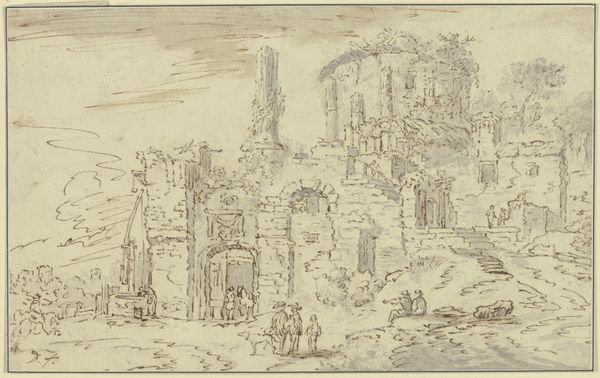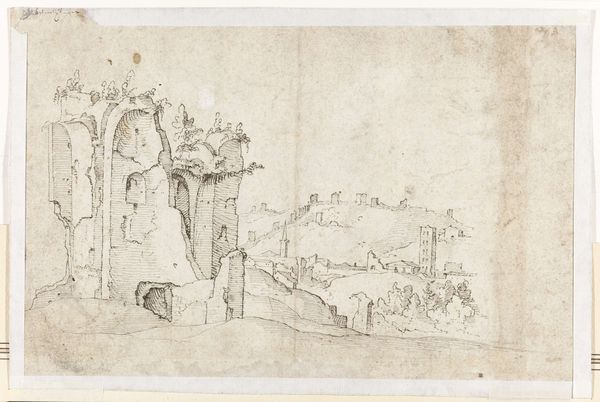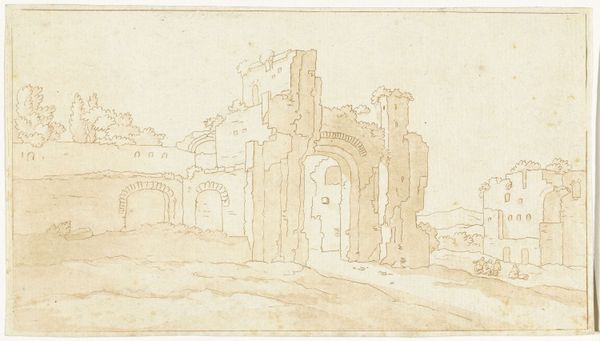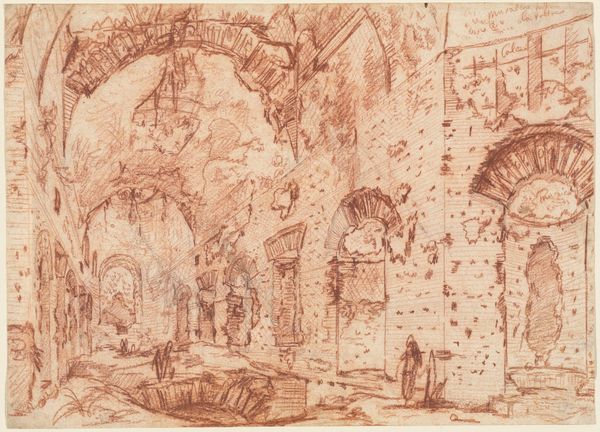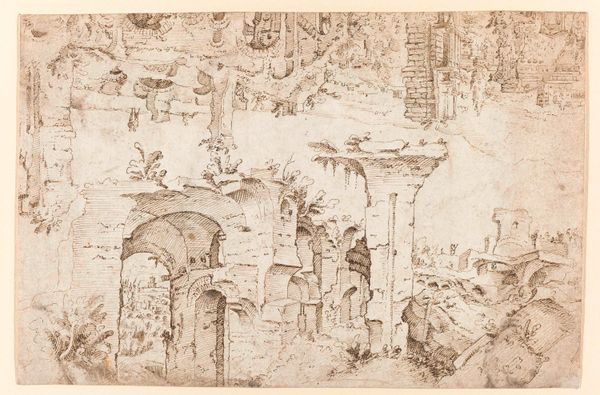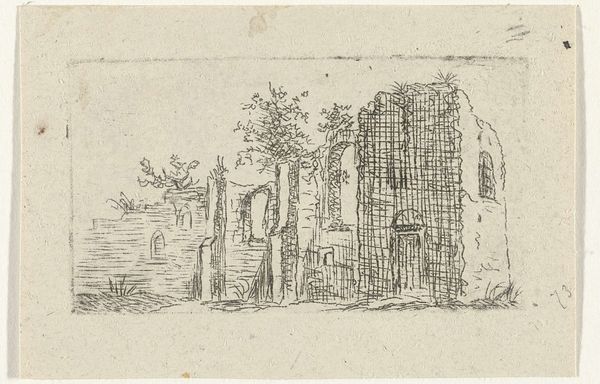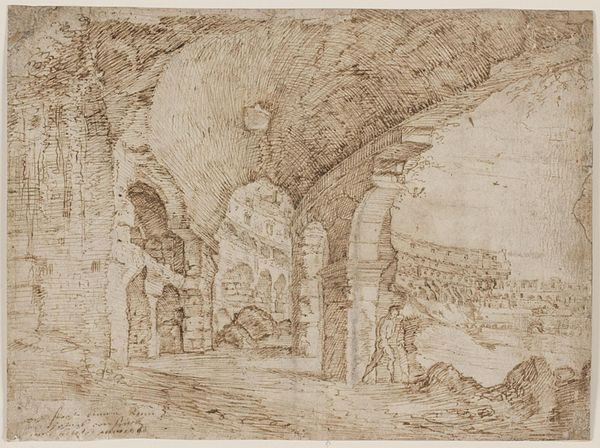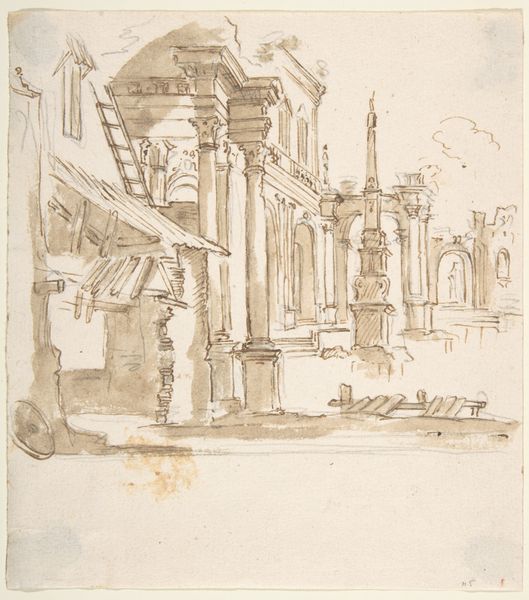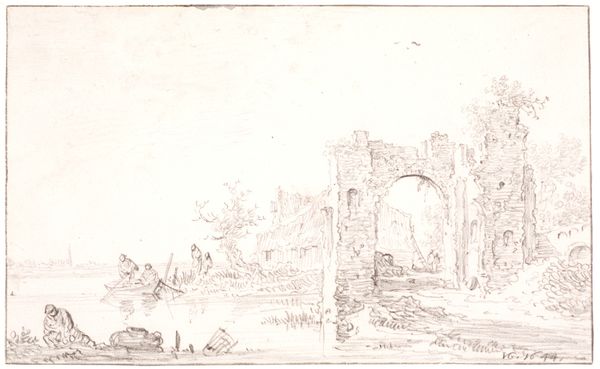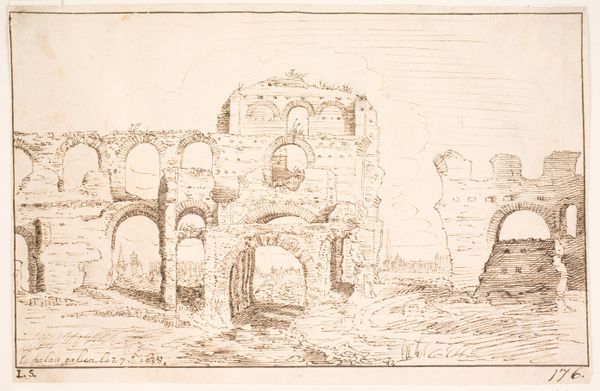
drawing, paper, pencil, chalk, graphite
#
drawing
#
dutch-golden-age
#
landscape
#
paper
#
romanesque
#
pencil
#
chalk
#
graphite
Dimensions: 98 × 158 mm
Copyright: Public Domain
Jan van Goyen sketched "A Romanesque Ruin" with pen and brown ink, capturing a scene laden with the weight of history. The crumbling arches and decaying walls speak of a bygone era, a visual echo of past grandeur now surrendered to time. Consider the arch itself, a motif stretching back to Roman triumphal arches, symbols of imperial power and victory. These rounded forms, adopted and adapted in Romanesque architecture, once framed entrances to sacred spaces. Here, however, they stand fractured, stripped of their original context and purpose. This echoes in Piranesi's etchings of Roman ruins, where fragments of once-mighty structures evoke a sense of melancholic contemplation. It is as if the collective memory of architectural ambition and human achievement now lies in ruins, stirring feelings of nostalgia and mortality. The power of the image lies not only in what it shows, but what it evokes, tapping into our subconscious understanding of time's passage and our own impermanence. The ruin persists as a potent symbol, resurfacing in art across centuries, each time carrying a nuanced weight of historical reflection.
Comments
No comments
Be the first to comment and join the conversation on the ultimate creative platform.
